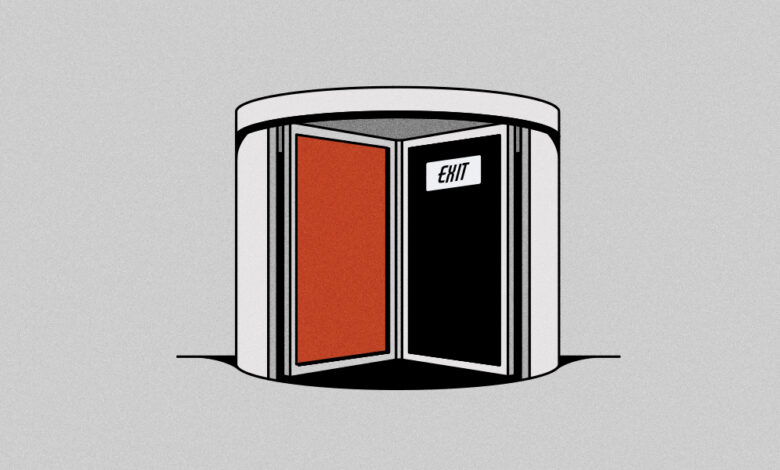Overheard at DMBS Spring 2024: problems and solutions to retain talent

By Michael Bürgi • March 8, 2024 • 5 min read •

Ivy Liu
This article is part of Digiday’s coverage of its Digiday Media Buying Summit. More from the series →
Among the variety of topics addressed at the two Town Hall discussions at Digiday’s Media Buying Summit in Nashville on March 4 and 5 — including measurement challenges, AI’s looming presence, brand safety concerns and misalignment with client needs/demands — the internal-facing topic of talent and talent retention dominated the second day.
Put simply, agencies struggle with a number of obstacles when it comes to the issue of colleagues, bosses and subordinates in the same agency. There’s the lure of more money at ad-tech firms, the flow of talent into the client during in-housing and the perennial hassle of too much work on too few shoulders when cutbacks hit.
So how’s a media agency supposed to manage those issues, among others? The agency-only crowd attending the town halls offered up a handful of interesting solutions.
Both conversations were held under Chatham House Rules, which provide anonymity to all the speakers as a means of sparking more honest commentary.
Here are some of the challenges and solutions that were discussed.
Generational gap
“With clients coming to us with more projects or smaller scopes, we can’t afford to keep the talent, so we try to employ other avenues like leave early on Friday. The thing with the new generation with tech, they really don’t care. At the end of the day … they are empowered to get what they want from a job and are quick to change and leave [if they don’t]. So we’re grappling with that. And then here are vp’s like myself speaking to executive leadership saying ‘We need to make this change.’ And executive leadership is like, ‘I don’t care — this is how we’ve been doing it.’ And the people that are left are trying to pick up the pieces.”
“We’re now seeing everything build up to a point where the industry has enabled rapid progression [of young staff] to retain people. And now [for positions that require] what used to be three, four years worth of experience, we’re getting resumes and applicants with 12 and 18 months. It’s just inundated with this generation that are very entitled. When they get these roles, they can speak the speak, they can nail the interview. But then when they sit down in front of the computer and we say, ‘Can you do this? Can you do that?’ They say no. And we’re having to train up over 1218 months, which in turn causes more turnover, because we get these people that are not right for the job that we have to let go.”
Some of the perks
“Our agency is an independent. We implemented a ‘Work from anywhere in the world for 30 days’ … and it’s helped with retention tremendously.”
Getting outside help
“I’m undertaking a project now of pay disparity between roles. We’re hiring a third-party salary counselor, which I think is great, to come in and look at our salaries — where we’re located geographically — and make sure that we’re competitive. But then the individual approach we’re having to take is that we have multiple people in a role and looking at what level they are in their experience. And we’re going to hope to standardize it … We have a whole slew of staff right now that have three or four years of tenure, so they’re looking for what is the next step.”
Going on call
“The biggest friction point we found was our agencies don’t pay as much as others. So we kind of went rogue with our regional CEO, and she implemented a pilot program, where every week each employee has an on-call day. If you’ve finished all of your work for that week, you’re on call. The reason we call it on call is, just in case there’s a need to finish up work or your manager has questions, you have two hours to get back to them. Otherwise, you can do whatever you want with that time. And we’ve seen people use that as a benefit — someone actually got an early diagnosis for cancer … Our turnover for the past three years has been so much lower than the industry average.”
Hire from traditional media
“I would recommend that you reach out to people that you’ve worked with who are in corporate environments. I came from working within traditional media. I will tell you one-third of the sales reps that are in that industry would die to work at an agency, I’m not kidding. I started two years ago, it took me until my mid 40s, to start working with an agency. Reach out to those people, because most of them have a degree or higher education in marketing and advertising. They just can’t get in — they don’t know how to talk to you. I know probably 10 people who would immediately take a job with any of you. And money is not an issue. Because working in those corporate environments is hell. My wife tells me all the time how much happier I am.”
Using AI to train
“I think AI could potentially help with this problem. People spend a lot of time training people on things that are kind of repetitive and monotonous. When there’s a change on the team with a new person that you’ve got to teach them how to do their stuff. Autonomous AI agents can help automate all of those things so that you can actually focus on training the people that you bring in, in the areas that are really going to help. The softer skills, the strategic skills — those things that are really going to move the needle.”
Bill yourselves for training
“We had a lot of our best leaders complain that they didn’t have time to do the internal feedback or to train up really young Gen Z kids on media buying tactics. So what we did is we kind of turned the tables. All of us leaders basically have billable hours that are internal. And we compare the hours we spent, like self billables, versus the cost to recruit new talent or the cost of trying to go out and retrain people. So we came up with this metric. It was a massive shift for all of us as leaders, because suddenly the billable client hour doesn’t matter, because we’re spending two times more to acquire new talent when we could just retain the talent. You take yourself on as a client, you take on your team as a client, and realize you’re actually making more money because you didn’t have to go rebuild the team every year.”
https://digiday.com/?p=537272


